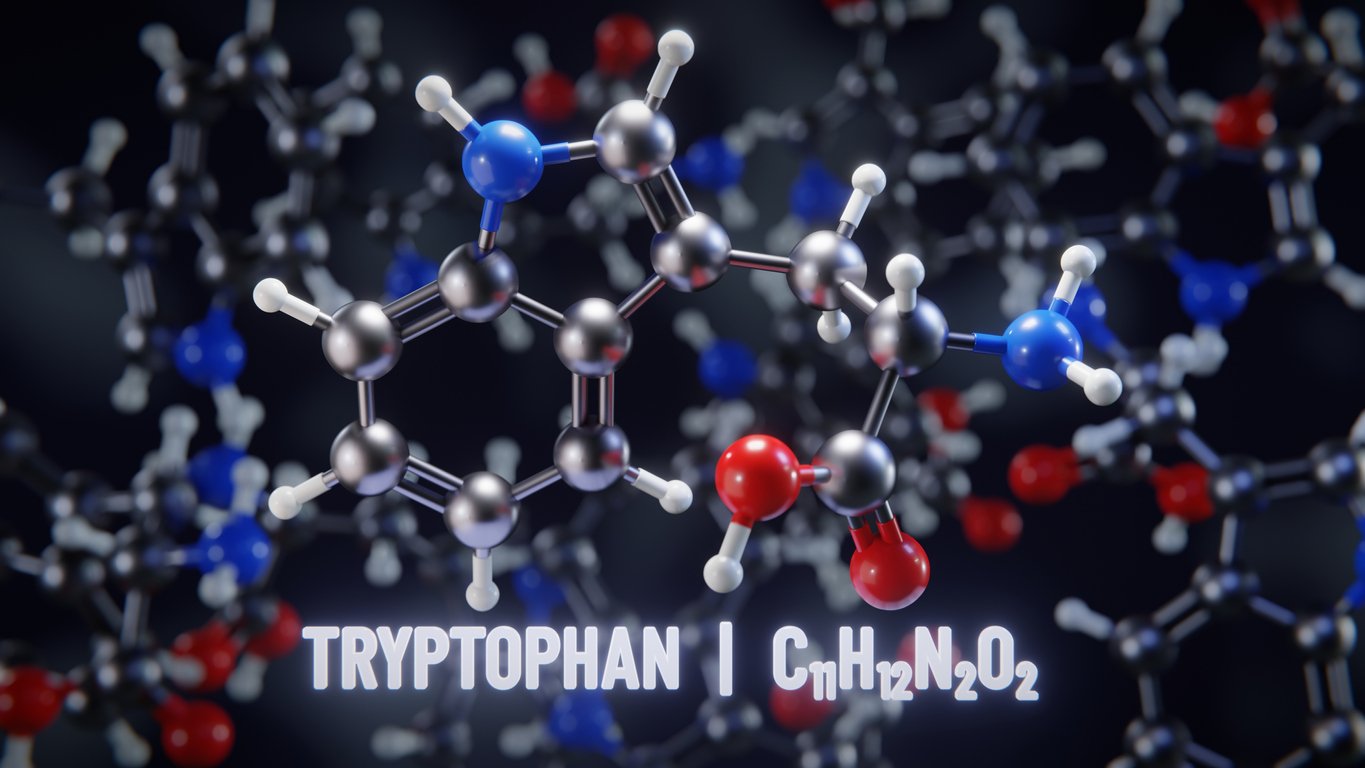Share this
microsampling to measure tryptophan-related biomarkers
by James Rudge, PhD, Technical Director, Trajan on Sep 27, 2022 9:00:00 AM
An article by Michele Protti et al at the University of Bologna in Italy and other institutions, published in the September 2022 edition of Molecules, investigated the use of Mitra® devices with VAMS® technology for tryptophan (Trp) and related biomarkers. The paper is entitled “Volumetric Absorptive Microsampling (VAMS) for Targeted LC-MS/MS Determination of Tryptophan-Related Biomarkers.”
This pilot study successfully measured 24 metabolomic biomarkers from three key metabolic pathways. The authors concluded that this method – using VAMS extracts and LC-MS/MS – can be applied to analyze Trp metabolites and related biomarker levels to monitor disease states, perform mechanistic studies and investigate the outcomes of therapeutic interventions. 
The Importance of Biomarker Research in Metabolomics
In recent years, omic biomarker research has exploded. The field of metabolomics has been particularly active. A 2020 review by Michael A Kiebish et al at BERG Health reported that PubMed had recorded an exponential growth in published metabolomic biomarker manuscripts. This is a major push forward compared to the previous decade in which fewer than 200 papers on metabolomic biomarkers were submitted for publication.
A significant increase was seen in 2019, when approximately 1,400 papers on metabolomics and/or metabolomic biomarkers were published. A similar trend was observed with regard to papers published on the combined topics of metabolomics and pharmaceuticals. Indeed, a recent online search of the word ‘metabolomics’ on www.clinicaltrials.gov delivered a result of 1,697 studies, of which 761 were listed as “not yet started” or “active”.
Why Metabolomics?
Metabolomics gives us a snapshot into the metabolic pathways within our cells and extracellular spaces, including contributions from the biome. Indeed, the same review by Michael A Kiebish et al reported that the human metabolic database, or HMDB, listed >25,000 metabolites in human blood. Understanding metabolic pathways and how they interact with disease can help to diagnose and prognose conditions. It is thought that metabolites may act as a barometer of an individual’s health prior to any disease onset.
Indeed, one family of metabolites that are of great interest to diagnosing and treating a number of conditions, such as neurodegenerative diseases and cancers, are related to metabolites found in tryptophan (Trp) related pathways. For example, one specific pathway that is of great interest to researchers is the kynurenine (Kyn) pathway (KP) of Trp degradation. Additionally, enzymes such as indoleamine-2,3-dioxygenase 1 and 2, as well as tryptophan-2,3-dioxygenase (TDO) are targets for therapies, with multiple compounds in clinical trials investigating a class called immune checkpoint inhibitors.
One of the key challenges for metabolomics research is sample collection, not only for ease of blood collection in clinical research or human trials but also in preclinical studies involving lab animals. Mice are often the lab animal of choice for blood sampling during in vivo studies conducted in preclinical research. However, taking blood samples from mice in an ethical way can be challenging, because mice typically only have about 1.5-2.8 mL of blood. This means that more mice may be needed in order to collect a sufficient number of blood samples required for gathering data. This presents a dilemma, since research labs strive to use as few animals as possible to complete their studies.
One solution to reducing animal usage in preclinical research has been to employ microsampling strategies. Less invasive and low-volume sampling tools such as dried blood spot (DBS) cards and Mitra devices with VAMS are key in helping to reduce the number of mice used in studies. Although DBS cards have been used for metabolomics studies and others, Protti et al decided to employ VAMS devices for the study reviewed here.
One reason was because devices based on volumetric absorptive microsampling can overcome several of the challenges of older dried blood spot technology. One such challenge is the hematocrit dependent volumetric spot spread bias. Therefore, the team embarked on a proof-of-concept study to evaluate VAMS for analysis of 24 tryptophan-related biomarkers.
Tryptophan Study Method and Findings
- Biomarkers (n=24) belonging to 3 Trp pathways (including the KYN pathway were selected).
- An LC-MS/MS assay was employed using a Pentafluorophenyl (PFP) column to simultaneously measure all 24 analytes from VAMS (10 µL) extracts.
- The group used a standard addition method using blank blood and fortified blank blood as the analytes in question were endogenous molecules.
- The method focussed on evaluating precision, carryover, absolute recovery, linearity, sensitivity, selectivity, and stability.
- Extraction optimization was conducted, which involved screening methanol, acetonitrile (ACN) and mixtures in water, acidic and basic conditions. The optimal conditions involved an ACN / water mix involving ultrasound, vortexing and centrifugation.
- Extraction efficiencies were high for all analytes (>85%) and internal standards (>91%) at three concentrations (low, medium, and high).
- Low RSDs were observed at all three concentrations tested (<9.6% for the analytes and <7.3% for the ISs).
- Matrix effect was between 78 - 96% and no carryover was observed.
- The method was selective, as all analytes were resolved satisfactorily and identified unambiguously using multiple reaction monitoring.
- Sensitivity of the method was between 0.1-25 ng/mL (LOQs) as this was limited by the utilization of the standard addition method. For Trp, the theoretical LOQ would have been a lot lower (sub ng/mL). For this reason, LOQ was calculated at the lowest concentration added to the sample that could be reliably measured (accuracy ± 20% and precision <20%).
- Method linearity was good for all analytes (r2 >0.9987).
- Samples were stable on VAMS at 24 ± 4° C for at least 30 days. The group stated that this good stability offered promise for using VAMS for targeted biomarker studies such as this without seeing temporal and temperature biases (under the conditions tested).
- The method was then piloted on 3 samples from three mice by spiking blood at different analyte concentrations. Accuracy was reported at 90-107%.
Study Authors’ Conclusions
- This study marked the first use of VAMS for Trp-related biomarkers in an LC-MS/MS assay (to the best of the authors’ knowledge).
- Extraction was optimized in 100 µL of an ACN and H2O using both ultrasound and vortex-assisted extractions.
- VAMS was found to be a reliable sampling method for measuring Trp-related biomarkers from three key pathways, determined with proper sensitivity and good accuracy.
- Satisfactory recoveries (>85%) were seen for all analytes and good selectivity, precision and accuracy were observed.
- No stability issues were seen over the conditions tested.
- This method opens the possibility of VAMS sampling in biomarker and targeted studies in the field of Trp-related compounds in different research fields.
Neoteryx Comments
Development of reliable and well-validated methods is critical for emerging omics. The conversion of volumetric microsampling approaches and highly sensitive analytical methodologies such as LC-MS/MS (as utilized in this study) opens the door for the personal health monitoring revolution. Indeed, Trajan microsampling devices have been used in a wide variety of omics studies, from measuring microRNA for biomarker research to targeted and untargeted proteomics and metabolomics.
Indeed, a recent untargeted proteomics paper identified more than 1,642 proteins from one 30 µL Mitra device, such is the power of modern LC-MS/MS methodologies and instrumentation. As discussed in another blog, the hemaPEN® microsampling device has been used to successfully measure metabolomic biomarkers in athletes during exercise and rest.
This article was summarized for our readers by James Rudge, PhD, Neoteryx Technical Director. This is curated content. To learn more about the important research outlined in this blog, visit the original article in Molecules.
For more information on how Neoteryx microsampling products from Trajan are benefiting omics researchers, please visit our Technical Resource Library and select ‘omics’ in the key topic field.
Image Credits: iStock, Neoteryx, Trajan
Share this
- Microsampling (206)
- Research, Remote Research (119)
- Venipuncture Alternative (105)
- Clinical Trials, Clinical Research (83)
- Mitra® Device (73)
- Therapeutic Drug Monitoring, TDM (51)
- Dried Blood Spot, DBS (39)
- Biomonitoring, Health, Wellness (30)
- Infectious Disease, Vaccines, COVID-19 (24)
- Blood Microsampling, Serology (23)
- Omics, Multi-Omics (21)
- Decentralized Clinical Trial (DCT) (20)
- Specimen Collection (18)
- Toxicology, Doping, Drug/Alcohol Monitoring, PEth (17)
- Skin Microsampling, Microbiopsy (14)
- hemaPEN® Device (13)
- Preclinical Research, Animal Studies (12)
- Pharmaceuticals, Drug Development (9)
- Harpera Device (7)
- Industry News, Microsampling News (5)
- Antibodies, MAbs (3)
- Company Press Release, Product Press Release (3)
- Environmental Toxins, Exposures (1)
- July 2025 (1)
- May 2025 (1)
- April 2025 (2)
- December 2024 (2)
- November 2024 (1)
- October 2024 (3)
- September 2024 (1)
- June 2024 (1)
- May 2024 (1)
- April 2024 (4)
- March 2024 (1)
- February 2024 (2)
- January 2024 (4)
- December 2023 (3)
- November 2023 (3)
- October 2023 (3)
- September 2023 (3)
- July 2023 (3)
- June 2023 (2)
- April 2023 (2)
- March 2023 (2)
- February 2023 (2)
- January 2023 (3)
- December 2022 (2)
- November 2022 (3)
- October 2022 (4)
- September 2022 (3)
- August 2022 (5)
- July 2022 (2)
- June 2022 (2)
- May 2022 (4)
- April 2022 (3)
- March 2022 (3)
- February 2022 (4)
- January 2022 (5)
- December 2021 (3)
- November 2021 (5)
- October 2021 (3)
- September 2021 (3)
- August 2021 (4)
- July 2021 (4)
- June 2021 (4)
- May 2021 (4)
- April 2021 (3)
- March 2021 (5)
- February 2021 (4)
- January 2021 (4)
- December 2020 (3)
- November 2020 (5)
- October 2020 (4)
- September 2020 (3)
- August 2020 (3)
- July 2020 (6)
- June 2020 (4)
- May 2020 (4)
- April 2020 (3)
- March 2020 (6)
- February 2020 (3)
- January 2020 (4)
- December 2019 (5)
- November 2019 (4)
- October 2019 (2)
- September 2019 (4)
- August 2019 (4)
- July 2019 (3)
- June 2019 (7)
- May 2019 (6)
- April 2019 (5)
- March 2019 (6)
- February 2019 (5)
- January 2019 (8)
- December 2018 (3)
- November 2018 (4)
- October 2018 (7)
- September 2018 (6)
- August 2018 (5)
- July 2018 (8)
- June 2018 (6)
- May 2018 (5)
- April 2018 (6)
- March 2018 (4)
- February 2018 (6)
- January 2018 (4)
- December 2017 (2)
- November 2017 (3)
- October 2017 (2)
- September 2017 (4)
- August 2017 (2)
- July 2017 (4)
- June 2017 (5)
- May 2017 (6)
- April 2017 (6)
- March 2017 (5)
- February 2017 (4)
- January 2017 (1)
- July 2016 (3)
- May 2016 (1)
- April 2016 (2)



No Comments Yet
Let us know what you think